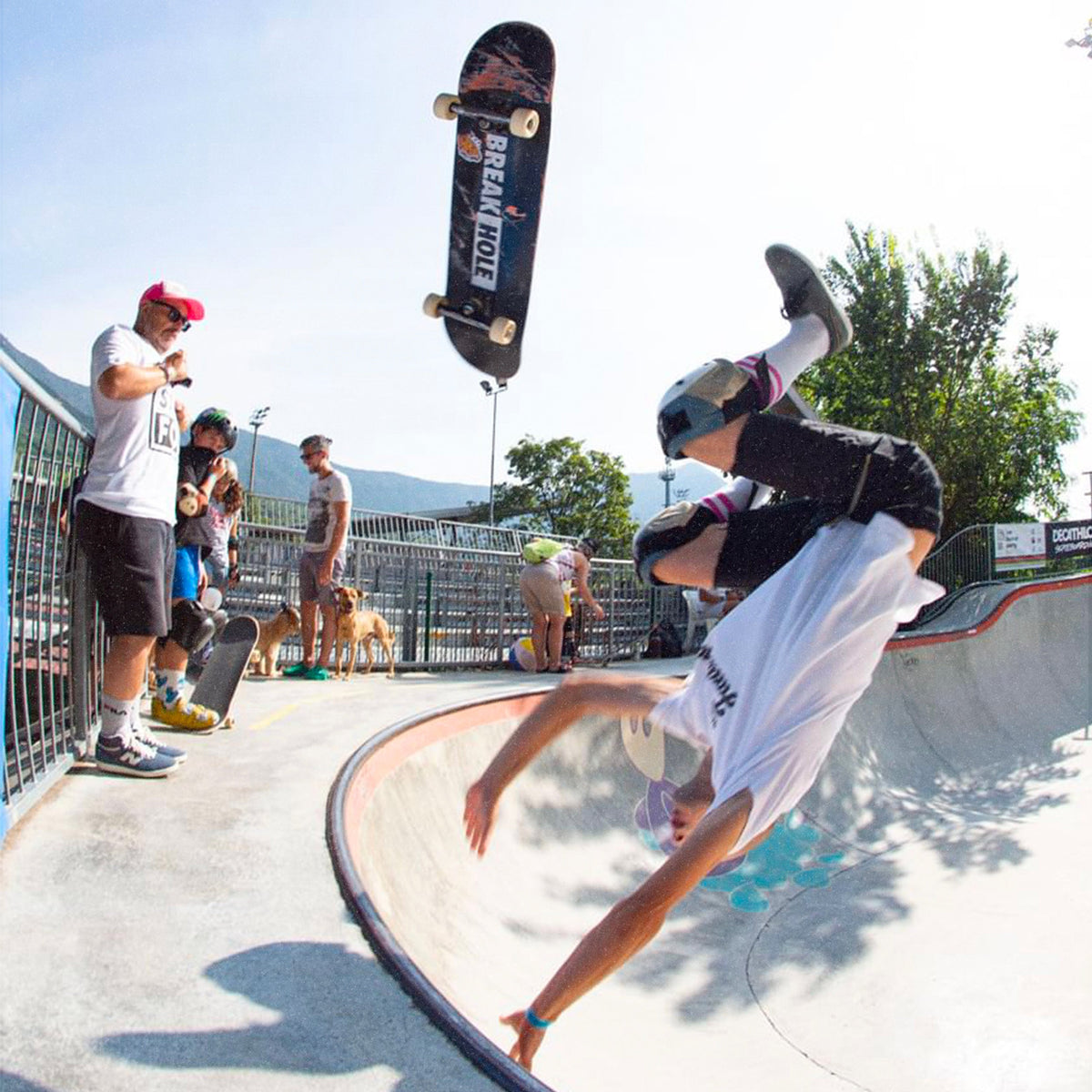
Skateboarding and streetwear have made a significant impact on popular culture, evolving from niche movements to global influences. At the core of this transformation are collaborations between streetwear brands, skaters, and hip-hop artists, which have brought these alternative lifestyles into the mainstream. But how did this relationship develop? And how have collaborations between skate and music icons redefined fashion and personal expression?
The Roots of Skateboarding and the Birth of Streetwear
Skateboarding originated in the 1950s and 1960s, when young Californian surfers sought a way to “surf” on land. This activity, born from a desire to break away from convention, attracted a nonconformist community that rejected the norms of traditional sports. Skaters, known for their rebellious spirit, began to dress in practical and comfortable clothing, laying the groundwork for the birth of streetwear.
In the 1970s and 1980s, streetwear emerged as the dominant style within skate culture, with brands like Vans, Stüssy, and Supreme designing clothing focused on both comfort and strong personal identity. These brands, rooted in the underground scene, became synonymous with rebellion and free spirit, reflecting the values of skaters.
The Rise of Skateboarding and Streetwear
The true boom in skateboarding happened in the 1990s. Films like Larry Clark Kids and iconic skate videos, such as those by Tony Hawk, helped bring skate culture to a broader audience. Tony Hawk, considered a skateboarding legend, had a monumental impact on the sport’s global popularity. The release of the Tony Hawk’s Pro Skater video game series in 1999 brought skateboarding into the homes of millions, along with its distinct style of clothing.
However, it was the fusion with hip-hop music that made streetwear truly explode in popularity. Beginning in the 1990s, the connection between these two subcultures grew stronger, with rap artists adopting skater style as part of their look. Early adopters of streetwear in hip-hop included Tupac Shakur, Wu-Tang Clan, and Pharrell Williams, who later founded the streetwear brand Billionaire Boys Club, heavily inspired by skate culture. Over time, artists like Jay-Z, A$AP Rocky, and Kanye West also embraced streetwear.

The Impact of Fashion Brand Collaborations
While streetwear and skateboarding originated in the underground, major brands helped propel them into the mainstream and popular culture. In recent years, we’ve seen a growing number of collaborations between high fashion brands and skate-related streetwear brands:
• Supreme x Louis Vuitton (2017)
• Nike SB x Travis Scott (2020)
• Gucci x The North Face (2021)
Additionally, collaborations between streetwear brands and hip-hop artists include:
• Supreme x Nike SB x Travis Scott (2020)
• A$AP Rocky x Under Armour (2018)
• Tyler, The Creator x Converse (2017 - Present)
These collaborations have transformed streetwear into a global phenomenon. No longer just practical clothing for skaters, streetwear has conquered runways, red carpets, and pop culture worldwide. These partnerships have injected new life into fashion, offering consumers something unique and often limited-edition, generating hype and turning clothing and accessories into coveted collector’s items.

The Next Level: Collaborations with Underground Artists
As streetwear continues to evolve and expand, the next step in its growth lies in collaborations that bring a fresh wave of creativity to the industry. Tattoo artists, illustrators, and visual artists—who share the same rebellious and nonconformist spirit as skate culture—are becoming the new faces of the most innovative collaborations. These artists, with their distinctive style and unique vision, help create pieces that are not just fashion, but wearable works of art.
An example of this evolution is Breakhole’s collaboration with tattoo artist and illustrator Brando Chiesa. This partnership not only celebrates creativity and artistic expression, but also shows how streetwear can serve as a canvas for artists exploring new horizons. Collaborations like these represent the future of streetwear, where fashion, art, and subcultures come together to continually redefine the boundaries of urban style.




0 comments